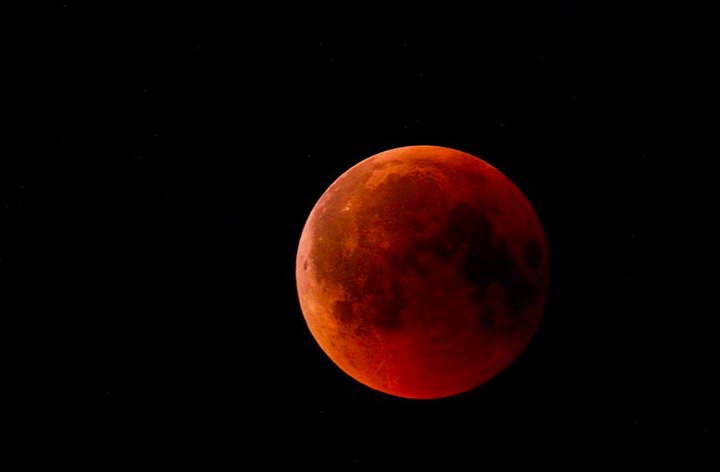
Will Humboldt get a view like this tonight? Probably not. But maybe! | “Blood Moon” by Andrey73RUS, via Wikimedia Commons. Creative Commons license.
###
If by some sort of miracle, the clouds part and the moon is clearly visible late tonight/ early Friday morning, then Humboldt County residents will have the opportunity to view a significant celestial event — an almost total lunar eclipse will take place starting at approximately 10 p.m. Thursday and will reach its peak at about 1 a.m. on Friday.
Should we be lucky enough to see it, there are a couple of things that make this eclipse special: For one thing, this particular eclipse will be best viewed in North America (that’s where Humboldt is!), with the entire continent getting a glimpse of the event, weather permitting. The eclipse will also be visible from parts of South America, Polynesia, eastern Australia and northeastern Asia. Secondly, this will be the longest partial lunar eclipse in 581 years! NASA reports that the eclipse’s duration will clock in at an impressive 3 hours, 28 minutes and 23 seconds.
“There hasn’t been a longer partial lunar eclipse since February 18, 1440 (3 hours, 28 minutes, 46 seconds) and it will remain the longest partial lunar eclipse for 648 years until February 8, 2669 (3 hours, 30 minutes, and 2 seconds),” NASA reports on its website. “There will be a longer total lunar eclipse on November 8, 2022.”
You probably already understand at least a little bit about how eclipses work and have likely even seen a lunar eclipse before. But, just in case you have not, LoCO will do its best to sum up the science behind this extraordinary event. Lunar eclipses occur when the Earth is positioned directly between the sun and the moon, causing the Earth’s shadow — or umbra — to fall across the surface of the moon. This turns the moon a striking and sort of eerie red color, gaining it the nickname “blood moon.” The November full moon is referred to as the “beaver moon,” so tonight the beaver moon will become a blood moon.
This cool video from NASA shows how tonight’s eclipse will happen:
Although this is technically only a partial lunar eclipse, the moon will be more than 99 percent blanketed by the Earth’s umbra at the eclipse’s peak, which is pretty darn close to a “full eclipse.” Suffice to say, if the weather does decide to turn in our favor, it might be worth staying up or setting your alarm clocks to view this special event.
And if the weather stays crappy, then, as NASA notes, there will be a full eclipse in November 2022, and Humboldt falls well within the part of Earth that will be able to view that eclipse too. So, maybe we will have better luck next year.
CLICK TO MANAGE